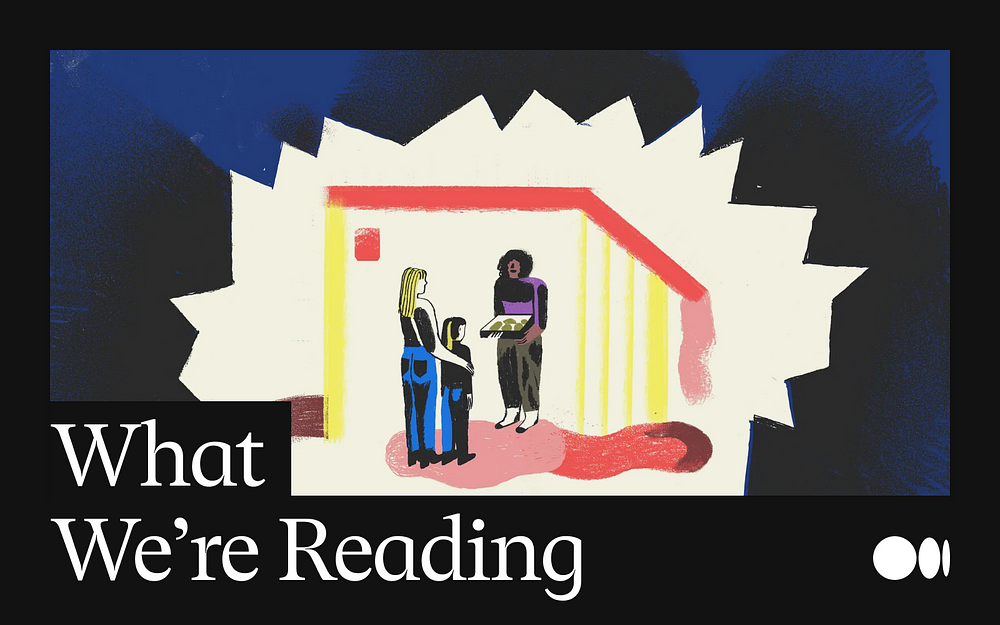
What We’re Reading
Can kindness reduce suffering?
Kindness is especially useful in understanding its opposites: Cruelty and suffering
Today is World Kindness Day. Too often, we use kindness as a stand-in for “just being nice,” but kindness is multi-faceted. I’d like to think that in a time like the present moment, it can be a useful tool to stay alert to our shared humanity.
Medium’s archives go deep on various aspects of kindness. This moving essay from writer Kristine Levine touches on how deeply understanding generosity is a road to kindness. “When you give the best you have to someone in need, it translates into something much deeper to the receiver. It means they are worthy.”
As other writers explore, kindness is especially useful in understanding its opposites: Cruelty and suffering.
In “One Question to Help You Practice Empathy,” writer and CEO Jane Park uses a twist on the prompt “assume positive intent” as a way to generate empathy. “‘Assuming suffering’ goes a step beyond ‘assuming positive intent’,” she writes. “What if the person in front of you is doing the best they can, but they are struggling? What if the world isn’t affording them any grace, so they feel like they have to steal it where they can?”
If you need one more, you could do worse than this 2014 essay from Paul Ford called “How To Be Polite.”
If kindness is the strategy, Ford writes, politeness is another tactic for empathy:
“People silently struggle from all kinds of terrible things. They suffer from depression, ambition, substance abuse, and pretension. They suffer from family tragedy, Ivy-League educations, and self-loathing. They suffer from failing marriages, physical pain, and publishing. The good thing about politeness is that you can treat these people exactly the same. And then wait to see what happens. You don’t have to have an opinion. You don’t need to make a judgment. I know that doesn’t sound like liberation, because we live and work in an opinion-based economy. But it is.”
See you on Medium.
, VP of Content @ Medium
What We’re Reading
How Spotify Returned to Profitability in 2023 is an interesting case study of new feature adoption and product-led growth at the music streaming giant. Published in UX Collective, this piece was written by , a product-led growth consultant.
The Diet of Our Ancestors: What Tapeworms Tell Us About Human Evolution
Most of us don’t think about tapeworms much. They’re uncommon in the developed world, and kind of gross. But it turns out the little freeloaders have something to tell us about human evolution.
Published in Illumination by , Professor of computational biology and evolution at Harvey Mudd College
- Writer and analyst Ty Stephens shares the experience of showing his grandfather, a former farmer, the power of generative AI — using the question “What if we could make a business plan to launch a hypothetical new farm in under 40 minutes?” — in “From Punch Cards to ChatGPT.”
- Former president Barack Obama shares “What I’m Reading on the Rise of Artificial Intelligence,” a handy starting place if you want to learn more about current thinking on AI.
Today’s final word is from astrophysicist and NASA columnist , who reverse engineers a question answered by a super computer in sci-fi author Douglas Adams’ cult classic series, The Hitchhiker’s Guide to the Galaxy. (For those that haven’t read this yet, just know that — per the book — the answer to life, the universe and everything is 42. That’s it. 42.)
Siegel writes this:
All told, there are many questions that 42 is clearly the answer to, but only a few of those questions have fundamental, universal, or cosmic implications. If it truly is the answer to the ultimate question about life, the Universe, and everything, we owe it to ourselves to try and reconstruct just what that question might be. From mathematics to physics, five vital questions emerge that legitimately have 42 as their answer.
- Rainbows always emerge offset at an angle of 42° relative to the light source that creates them.
- The number 10 can be mathematically partitioned exactly 42 different ways.
- 42 is the largest number whose reciprocal, added with three other unique positive integers, sums to exactly 1.
What are numbers four and five? Head to the story to find out.

